“While love and patience is important, what’s more important are the ways you ask her to step up and do something, and those things must come through to her as patience and love. Those two virtues are nothing without some form of “question”.”
This is a post I said I would never write, but it came to my on my Facebook page (https://www.facebook.com/#!/pages/April-Reeves-Horse-Training-Questions-Answers/192644566518?fref=ts). I save this information for my clinics, mainly because it’s better understood when you SEE it as well. However, this question does merit this information, and I always say, I may not be here tomorrow, so I will say it all today. These are also trade secrets that my clinic participants usually get to hear. Enjoy and I hope you gain from them!
Question: YAY! thank you! I have an 8 yr old mare, mustang cross., her name is HotLipz (she has a flame on her nose) She has a history of abuse and had severe trust issues when I first got her just over 2 years ago. I got her from the feedlot, just hours before she was to be shipped. She has come so far since then in learning to love and trust. She is super sensitive and needs to have a relationship before she will trust, so not just anyone can work with her. She needs lots of Patience and love. I’d like to take it a step further and be able to ride her. She is like 2 different horses. On the ground she is soft and calm and trusting. When someone is sitting in the saddle she can now tolerate it but once things get moving she falls apart. Sometimes big, sometimes not so big, its hard to predict. We have broken it down to the tiniest of steps for her. Rewarding the good behaviors, head down, relaxation, licking chewing breathing, with clicker training and carrots. She seems to make progress then something happens(and we can’t pinpoint what it might be that sets her off, something internal maybe, a click of self preservation?) and she reverts backwards to needing us to start all over again. I have contacted an animal communicator, animal empath, used essestial oils, massage, flower essences, calming supplements etc.. We have actually made a lot of progress together but seem to be stuck with the rider piece. She can walk on a loose lead anywhere with me and not worry, like holding hands with my best friend. We have a very strong connection.
Any suggestions? If you need more info let me know! I have lots of pics on my page: SerendipityFarm and Studio.
Thanks so much for any advice you can offer! I really enjoyed reading your blog and thought maybe there is hope after all. I don’t want to give up on her.
Thank you!
Peggy
Response from April Reeves: Hi Peggy,
Don’t give up on her. What I think she needs is just a different approach. While love and patience is important, what’s more important are the ways you ask her to step up and do something, and those things must come through to her as patience and love. Those two virtues are nothing without some form of “question”.
I have worked probably hundreds of horses that sound like this, and one thing to do when you begin is to ignore her past. You are working forward now. The past will dissipate: not disappear, as memory is forever, but think of it as “reprogramming” her. You will over-ride the past with valuable and good stuff today, until the amount of good over-rides the past.
I’m all for alternate therapies. But they do not replace consistent, quiet work. I’m going to give away secrets that I only talk about in my clinics, but here goes.
There are ways to speed train (a phrase I really don’t believe in, as I know if you train properly, it’s fast) and ways to get stuck all the time and not feel like you’re making progress. When someone says they make progress and then it’s gone, it tells me they are not training consistently or with a method that “steps” the horse through naturally on a progressive scale. We all try to get to the end first, but it’s the raw beginning that wins. A house without a foundation is not a house at all. Same applies to a horse.
So here goes, these are words I only say at my clinics. Mainly because it is easier to understand when you have the visual as well to go by. So I will try to make this as clear as possible.
First, don’t speak AT ALL unless it’s a cue. So you cannot talk to others while you are working with her, and you cannot talk to her unless it’s a cue to DO something or change something. At all.
Why would I ask this? Because people don’t realize that the incessant chatter does affect the outcome. Horses don’t read English: they only listen for specific noises (not words) that trigger a response within. Clutter that desire and you lose the lesson. In my clinics I tell the audience what I am about to do and why, then I tell them I will not be speaking for a while, and to also do the same. I want that arena dead quiet. Miracles happen in that space.
Second, be dead consistent. Read through the groundwork basics on my site and memorize them. Then work solo (without horse) to get use to the tools you will need. Make sure you can work with tools as if they are second nature to you. All whips and “extensions” must feel like your arm but are attached to your brain. Plus they are not used unless they ask for a specific result, and that result happens.
Third, and this is vital, use a rope halter. Have another person hold the halter while you pick up the lead that’s attached (12-14 foot) and “send” them somewhere, away from you. They need to close their eyes and respond only through feel of the halter. Most people pick up a lead rope and shove their horses straight into their space. Learn to pick up a lead rope and ask the horse to move away from you. You need to bring your hand up high and out far. You also need to not push with the rope. It’s a “suggestion” through the weight of the lead rope to the halter to move a specific way. The lead rope must be loose, not tight. Try it until your horse-human friend starts to move around you, not to you.
This will teach you intuitively how the horse feels at the end of the line, and why you often have the problems that arise. Lift and lead, over and over again. Send the horse away from you.
Then change places and you try the halter end. Really sends home the message of how sensitive a horse is, and how very often they DO indeed listen and do what you ask! Problem is, most people are asking the question wrong and not getting the results they want. Learn to ask the right questions the right way and training is a breeze…
What you need to achieve above ALL else is to teach the horse to think. We cannot achieve this by micromanaging every move. We must set the circumstances up to allow the horse to fix his own problems.
Again, do not speak to him. Do not chatter at him. Allow the horse to think. Now, the most important:
1. Don’t get frustrated if the horse does not get it. He will, if you are asking properly, consistently, clearly. Do not let your energy go past a patient quiet demeanor or you will lose the lesson. If you get frustrated, just walk the horse around until you change. It’s not his problem.
2. One of the only words he will hear will be “good boy”. Get him use to that phrase, say it exactly the same every time and soon his ears will go up and he’ll know he did something well. That’s one vocal I want to hear all the time!
3. Do not micromanage the horse. Remember: it’s ONE lesson at a time. If you try to “manage” him you will lose the lesson. This is speed training 101. Eventually you will join lessons together (multiple aids) but for now, because you are re-programming, keep it simple.
4. Allow the horse to think. What you need to achieve above ALL else is to teach the horse to think. We cannot achieve this by micromanaging every move. We must set the circumstances up to allow the horse to fix his own problems. This is the BIG secret no trainer ever tells. But I may not be here tomorrow, so here goes.
When you begin to see progress at any time, allow the horse 15 to 30 seconds to “soak” the information. He can stand, he can walk but look for the signs that he is thinking this over. This is the one big training secret I use continually in every discipline, and I see it’s a chronic problem for 99% of all horses out there. We drill them. We keep on them until we think they should “get it”. Most don’t. What we don’t do is allow the tiniest of breakthroughs to come to us, and reward it.
What appears to be a very tiny thing to a human is a very BIG THING to a horse. Acknowledge it. Reward it. It’s huge.
5. When the horse instantly begins to try what you are teaching them, back off. Don’t talk. Don’t use movements that don’t teach something. When I first get a horse to walk away from me on a lead (send) I stop looking at them and become very, very still for that moment. It’s about 3-4 seconds, but it signals to the horse that I an not an aggressor and that he is doing well.
The horse will eventually “fall out of line” and need to be re-minded to keep doing what you first asked. Then soften and stay still again once he takes even ONE step in the right direction.
Once a horse is doing what you asked, don’t keep asking! I see this over and over again: nasty habits people develop that interfere with the speed at which a horse learns. When you are “sending” him around you, don’t continue to ask him to walk if he is already walking. Let him take the responsibility to DO the walking until you ask another question (ask something else).
I recently helped a lady with a horse that wouldn’t load. This horse was taught NOT to lunge! Weird, but I had to just reprogram the horse fast. So we did the sending work and he picked it up in about 5 minutes. No lunge whip; just me, the horse and a rope halter and 12 foot lead. In 10 minutes he looked as if he had been lunging for years. This is how fast you can change patterns if you are consistent.
I then taught him to NOT move into my space (info on blog). When my hand came up, he began to move away. Another 5 minutes.
Then I began to send him up to the trailer. At first he would stop. I let him smell the trailer once so he could remember it each time he came up to it. Each time he stopped, I sent him again. It only took a few times and finally he jumped in.
I did not perform any miracle that day: I simply allowed the horse the process to think and define for himself that the trailer and the process to get in was not scary or harmful. What I DIDN’T do was micromanage the process and think FOR the horse. To win at training, you need to set up the experience for the horse to learn it himself and think, and get out of the way.
These apply to all of the training you will do, from ground work to saddle work.
6. Movement – yours. Every move you make must teach something. Every move must have a purpose. Otherwise, stay still. Extra movement is clutter, like the speaking. Refine your skills and your “questions” to the horse.
7. Do not EVER change HOW you ask the question! I see this all the time! People say “HO” in their sharp voice. The horse does not respond, so they say it louder or use a different word. Now the horse has had 2 completely different words thrown at him, and getting the response you want is even less likely. Then it deteriorates as you change your word and the way you say it again and again, and the lesson is not only lost, but the horse is confused and anxious and you set up the path to teaching him to fear you. Everything you do communicates. Every bad habit your horse gets comes from you.
I teach “HO” (to halt) with the voice inflection of the movement you want. I do not say “whoa” – I say “HO” in a very short and sharp manner, much like the physical response I want from the horse. A halt is very quick and sharp. Match your verbal language tone to the response you want. When I ask for down transitions, my voice is soft and long. From trot to walk it’s “waaaaalllllkkkkkk” and from walk to trot it’s “tr-ot” and it’s lively and springy. Down transition voices are long and soft, up transition voice is quick and springy. Each sound much have a distinction between them (sound different).
I have proven this to audiences, that sound is more important than the word. My big horse was so verbal trained that I could use a different word to change gaits, but if I said that word in the same tone as the gait I wanted, the horse would still respond accordingly. It’s not as much what you say but how you say it.
“You need to stop trying to “undo” things and start “doing” new things.”
8. Working with emotional horses. As I’ll repeat below, any horse with any history should only show you fear based emotion on the first few tries of something new, IF you are consistent, patience and quiet. If you get a horse “blowing up” after asking with this respect, do NOT attempt to change his emotional pattern at that instance. Instead, allow the horse to react, move, jump, what ever he is going to do, and just stand stationary (unless you’re in harm’s way) and allow him to move through the process. I’ve had horses blow out bad, try to run away, kick, bolt. I just kept feeding the line to stay out of their way, but I did not move, nor did I allow them to get away (this is where round pens rock). Eventually, they realize you’re not responding, so they stop and at that moment, you allow them to “soak” this in. Then ask again. If you get any emotion, repeat the above. Eventually the horse will not choose emotion, as they tend to choose the easier path, which will be your path, as it’s harmless and eventually, rather interesting, as horses like to have jobs to do. They just don’t want jobs that are painful.
I believe you can train almost any horse to do almost anything. There is really NO reason for a horse to not do something that is based in love and patience and is not harmful. Horses only fight when they feel their lives are at stake. Although you may get a horse that fights from the beginning, you should only see any fight from them once or twice. If you are quiet, patient and consistent, the fight will disappear very quickly. When you get a horse fighting (no matter how small a fight) you are bringing in the instinct part of the brain. You need to develop the thinking part and eventually the instinct will take a back seat to every issue that comes up. If you have done a good job, your horse will think before he leaps, literally. You can never get any horse to not notice: it’s in their DNA. But you can train them to think and not react.
How all this applies to your situation, is that you need to stop trying to “undo” things and start “doing” new things. While I will ask the horses history, it’s mainly because I don’t want to get hurt. If I know the horse rears and strikes your head when you tie them, I need to know this. If the horse bolts and runs through fences when you ask them to walk under saddle, I need to know this. Otherwise the rest is simple. I just add to their knowledge base, and set up the circumstances that allow thought to prevail.
HOW to apply the above to techniques and methodologies is scattered throughout the blog.
All the groundwork will apply to saddle work. The horse you lead is the horse you ride. If the ride is not good but the leading is, you are missing a piece of foundation. You herd the horse on the ground and you herd the horse from above (under saddle). Different to the human; not much different to the horse.
Specifically to your issue of riding, what you need to do, once she is “set off” and loses the beginning, is to just move through it again, using the above information. Often when people see their horses take a step backward, they dismiss the entire front of the training. But that is still there: it lives in the horse. You just have to keep asking until it becomes habit. That’s just time in and consistency.
She needs to learn on the ground, that a “cluck” or what ever signal you want to use, to get her to move forward, is responded to with lightning speed. This will transfer to the saddle.
I do not fight under saddle EVER: I keep a rope halter on the horse with the lead attached, and if the horse begins to feel as though it may fight, I’m off and sending the horse on the ground. Then back on (always use a mounting block) and continue. My flow from getting off the horse to back on is continuous and one big movement. There is an old wives tale that if you get off a horse, they become the boss. That’s not correct. If you get off and keep working them without any pauses, the horse will not connect this pattern. He only knows he’s being herded. The saddle to ground part is of no concern. Don’t give them the space to soak in their own authority over you and it simply won’t happen.
I also feel that you may be trying too many methods, until nothing becomes clear. I feel that you just need to do some homework on consistency and method, and you two will be just fine. Don’t look behind you: look forward when training. The past is the past: keep your thoughts on the new that you are imparting to her, and she will move forward. I believe highly in energy work, and teach this as a paramount tool for progression. I’ve seen students transform in one clinic once they “get” this. It can often over-ride inconsistent methods, until the methods are learned. That turns good horse people into great trainers.
Look through the blog for training techniques, use the “skills” above and let me know how it goes. This is all about you! The question lies in whether you will step up. The horse is only going to match what you give. Let me know if you get into any problems and keep me posted of your progress!
Thanks Peggy!
April Reeves
Horseman’s Park Alberta
403 224 3893


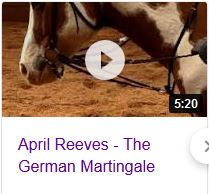
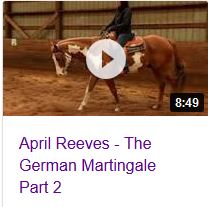
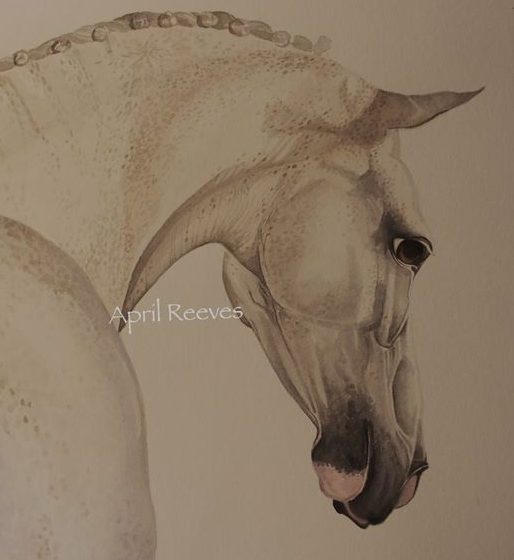

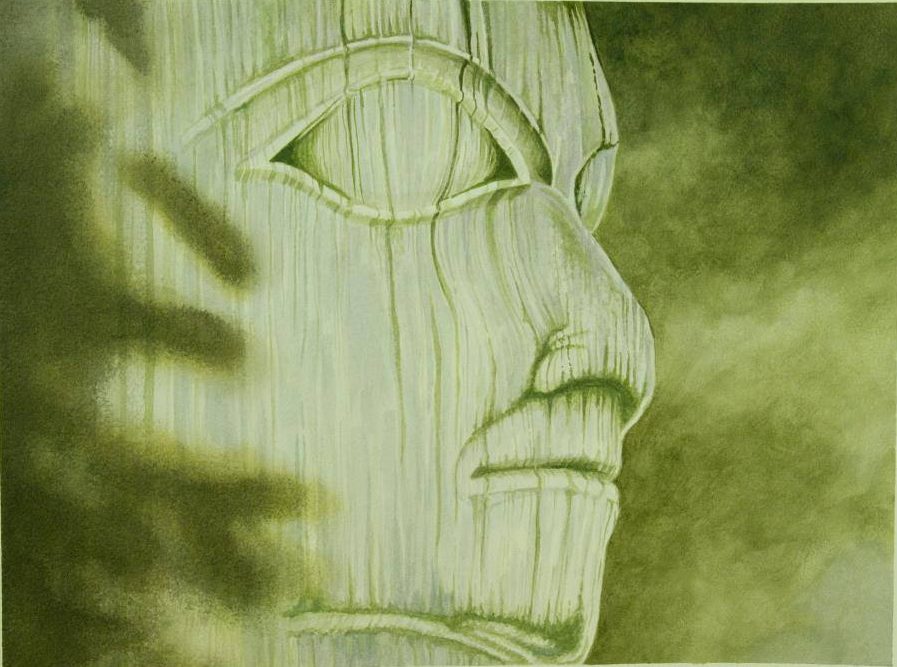
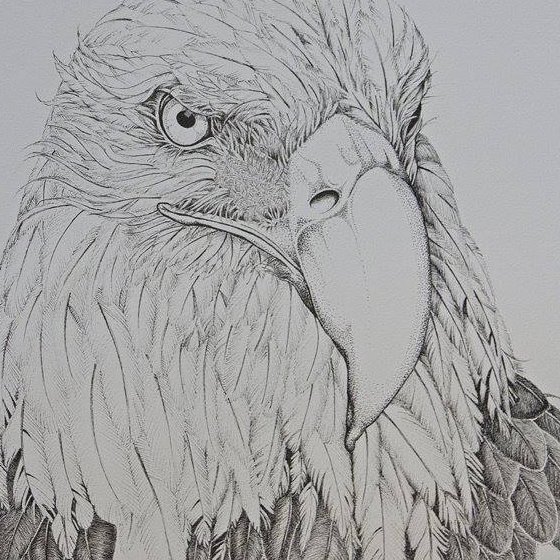




I love your articles. Since the last time I’d written I have gained confidience and began to ride my horse. I’ve only kissed dirt once but got right back on and resumed riding as if it never happened. My boy last year at this time was a wild horse. I did nothing but ground work with him daily twice a day for a year. I began riding about 4 months ago and have even gone solo on a short piece of dirt road. He’s very spooky at any movement and will now and then lunge to the left as if to run away but I stay calm in the saddle, collect him nd move him forward as if no big deal. If he continues to be anxious by a flag blowing or a cow moving, I’ll turn him towards it and allow him to look at it, stand still and I don’t talk. I allow him to absorb it , let him realize it’s not going to eat him and then we simply move on. He truely trusts me and each time I ride I ask him to trust me that I won’t hurt him and I ask he doesn’t hurt me then off we go. I work in a small arena and have cones set up, cavaleties set up to help him collect his feet. The other day he actually tripped over his own hoof and he went down into a kneeling position with me on his back. I held onto his neck and he got back up. I rubbed his neck and said your ok , lets move and I cued him and we went right back to the work we were doing.
I’ve really grown since I got up the nerve to ride him and he’s grown a lot too. I’m super proud of us. I’m not a young girl any more but if I can do this any one can.
Wow, that truly is something to be VERY proud of!!! And I’m glad you are finding value in this site! Keep on working at it and keep me posted on your progress: love to hear how people are doing! It is always about the horse…
So glad to find your stuff again, April. I’m happy to report that Teika and I are still making progress. We have different issues, but the questions and answers are the same. I have an example I’d like to share. It’s become my routine to warm her up in a round pen before a lesson or a ride. I walk her on a 12 foot lead rope in both directions and when she’s listening well, I take off the rope halter and do the trot and canter work at liberty. She used to buck a lot in the canter and the jerking on the lead was hard on my elbows and shoulders. Working at liberty works really well with her most of the time. The exception is if something upsets her. Last time it was a flock of chickens of all things! The chickens came into a patch of grass close to the round pen and Teika just lost it. Her flight mode kicked in and she ran frantically around the round pen as if they were actually velocipraptors or something. It’s really hard to get her attention when she’s like that and not having a halter and lead on her is a problem. She won’t listen to requests for down transition, so I do lots of direction changes until her brain re-engages. Luckily, I’ve done the basics about respect for my space. Even when she’s frantic she stays to the outside of the pen and doesn’t endanger me. However, once she gets into that mode riding is out of the question. She’ll be on edge for hours after that so I do ground work with her instead of riding.
I was thinking to myself, this isn’t working. I don’t need a flock of chickens (or whatever) to ruin my ride. I need a better way to warm her up. I realized I was warming up her muscles, but not her brain. I decided to change our routine. The place where I ride has a small outdoor arena they call the “play pen” which is primarily for ground work. For the last few weeks I moved out of the round pen and work in the arena to warm her up. I start with ground work basics. I still do the walking circles on the lead to start but I’ve added 1) backup, 2) yield hind quarters, both sides, 3) yield shoulders, both sides. 4) more backup. When she’s giving me this softly and willingly I take off the halter to do the trot and canter at liberty as usual. At first she tries to avoid the work and goes as far away from me as possible and pretends she doesn’t hear me. This requires me to move around a bit myself. But I’m persistent and calm and within a few minutes she’s listening to even the softest cues. Once she gives in to me I can stand in the centre and with just pointing with the stick and/or my arms she’ll change directions respectfully. She’ll transition up or down with just the softest verbal cue. It’s amazing how well horses hear once they’re listening! After a few laps of trot and canter in both directions she closes the distance between us herself and soon I have her going around me in a circle the same size of the round pen. Of course, when she does well there’s lots and lots of praise. After a few minutes she’s good to go, so I ask her in, give her a pat and a treat and we head out for a ride.
What a difference this makes! Teika is doing so much better in her lessons. We’ve been able to master some things we’ve been having a lot of trouble with (side pass, leg yields). The key was to warm up her brain as well as her muscles. I knew this. I just forgot to apply it. It doesn’t take that much longer to warm her up now, and certainly a lot less time than if something unexpected happens. She’s much easier to communicate with if I’ve done those backup and yields. Lesson learned: it’s always good to remind yourself of the basics and to use groundwork the way it was intended. Reading your stuff helps me remember those things. Good work, April.